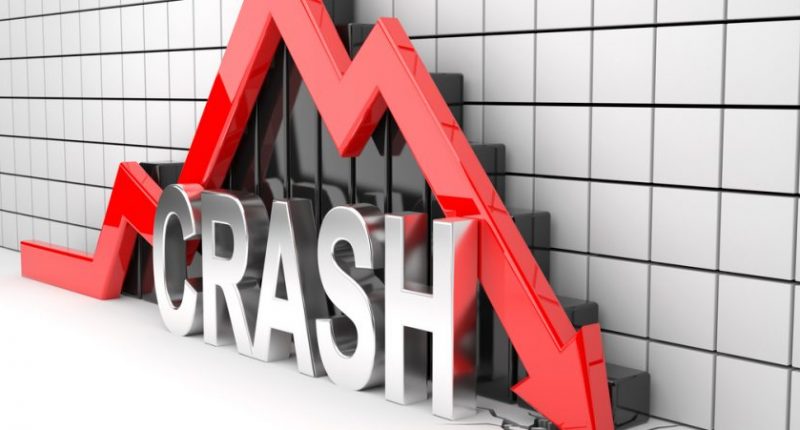The non-banking financial companies or NBFCs are in crisis for several months. The Corporate Affairs Secretary, Injeti Srinivas told the Press Trust of India that the misadventures of large entities along with over-leveraging, credit squeeze, a mismatch between liabilities and assets, and excessive concentration are the reasons behind these troubled times.
Before we move on to the effects of this crisis, let’s know why it’s important.
What is the crisis all about?
NBFCs, currently, do not have money to lend and are having difficulties in raising funds. To raise money, these companies borrow an amount from private banks or sell commercial papers to mutual funds. This cash is further lent to retail customers and small and medium enterprises (SMEs). Due to the lack of funds, there is a negative impact on the credit flow of the economy and economic growth and caused several borrowers to default on loans.
What led to this imminent crisis?
There are two major factors that led to this disaster.
First, the business model of the NBFCs is significantly flawed. It depends on raising short-term funds and lending out long-term loans, which leads to a situation, known as the asset-liability mismatch. This mismatch can be explained better through an example.
Suppose an NBFC receives funds by selling a 6-month debt paper. It then lends this amount as a car loan for 5 years. As a result of this scenario, the NBFC has to renew the 6-month debt paper or raise loans to pay the debt paper. In tough times, this cycle will be broken.
Second, this cycle was disrupted when a few firms of the IL&FS group failed to meet the commercial paper recovery obligation. Banks, investors, and mutual fund managers were afraid that the entities would not default and this would turn out to be a contagion. Due to this fear, NBFCs failed to raise money and the cost of funds went up by 150 basis points.
What led to these fears of contagion?
After the demonetisation, a lot of cash was deposited with investors and private banks. The investors, in turn, parked their money with mutual funds. The fund managers of debt scheme sent their cash to money markets and NBFCs were able to get access to cheap funds. As a result, the loan portfolios of NBFCs had grown at an accelerated rate, compared to private banks.
Also Read: SEBI lowers minimum subscription norms for REIts, InvIts
On the other hand, the fund managers, banks and NBFCs wanted high returns for their investors. This led them to take higher risks and compromise on the quality of their company’s terms and conditions. The excess cash that was lying around in the system was not only given to NBFCs, but also infrastructure players as loans against shares.
Why is it important to know about the disaster?
NBFCs play a vital role in the economy. Their share of credit had increased because they were lending out to sectors, used commercial market for instance, where the private banks would refuse to help.
Now that the NBFCs are finding it difficult to raise funds or pay a huge cost for doing so, this will negatively affect the credit flow of the economy. It will also have a grave impact on the MSME sector that’s already facing issues because of demonetisation and GST.
Moreover, it will hit the primary engine of the country, the consumption demand. The investment demand is yet to pick up and exports are flagging, further leading to a cut in credit and economic slowdown.
A reduction in credit could also lead to an additional pile of non-performing assets (NPAs) in sectors such as commercial real estate and infrastructure.
What are the consequences of this crisis?
A huge amount of cash is locked in construction, real estate, and infrastructure projects. The promoters had pledged their shares as collateral to the banks and are unable to borrow more to finish the projects or sell them to others.
Hence, they are signing a ‘standstill agreement’ with the banks to make sure the shares are not sold. The lenders and investors might end up poorer as they have no control over the price structure of these shares.
Do we need to panic?
You should be watchful instead of panicking. The debt schemes of numerous mutual funds have had their net assets erode. Hence, it is advisable to have an investment adviser guide you.
What happens now?
The Reserve Bank of India (RBI) has bought a government debt paper worth Rs 3 lakh crore. This way the RBI can help NBFCs to be back on the lending track as the central bank cannot lend to the latter as they do not hold and government paper as collateral.
NBFCs will have to look for alternative sources such as public bonds, external commercial borrowings, and sale of assets. An analyst was quoted saying, “Most of their borrowings will be used to repair balance sheets and refinance liabilities. Even if a full-blown crisis won’t happen, it will take at least 12 months for NBFCs to come out of this disaster.”

An Editor by day and a sloth by night…I would love to eat and sleep throughout the day if given a chance…I enjoy reading and love my job and my team at ClearTax.





